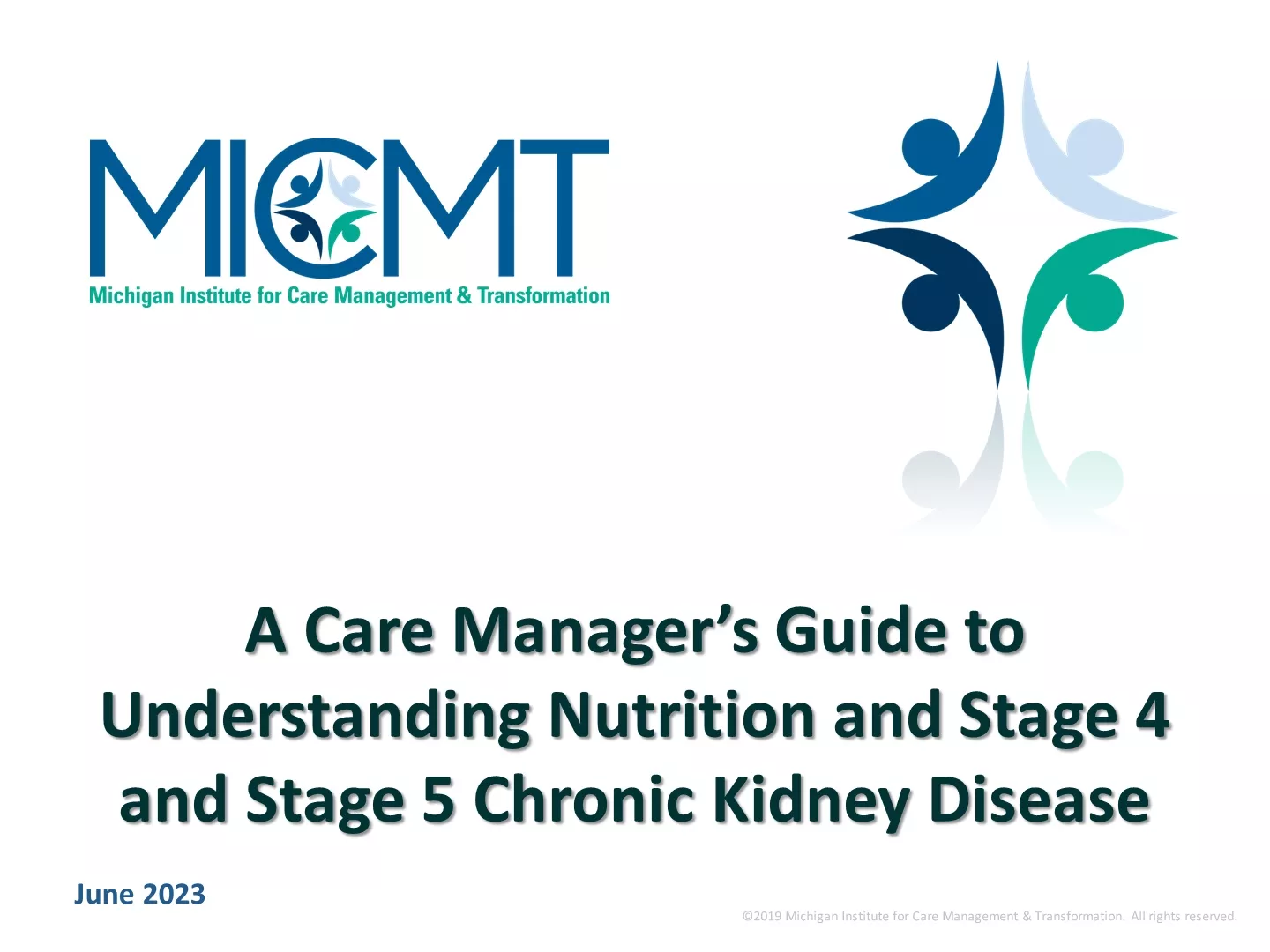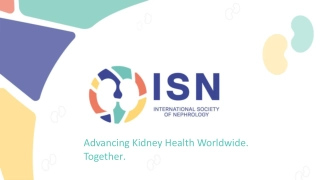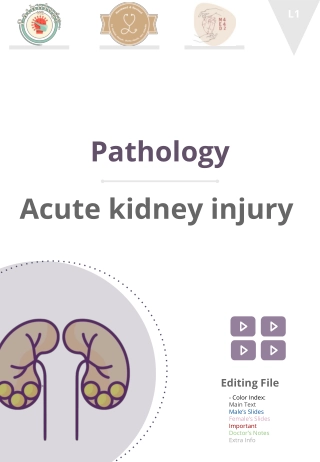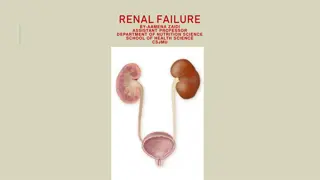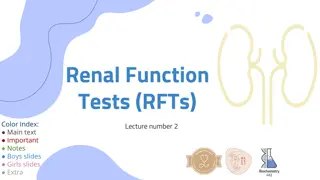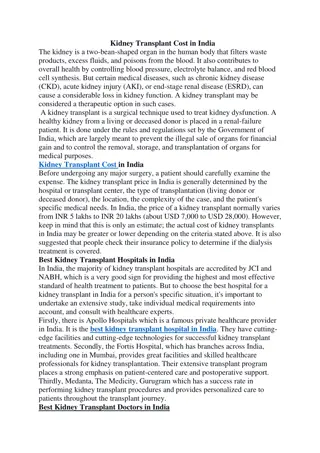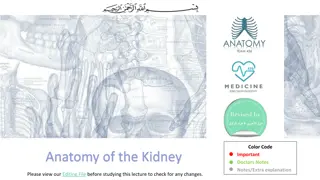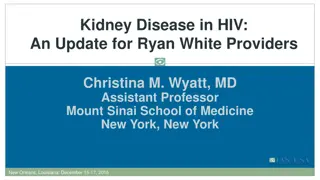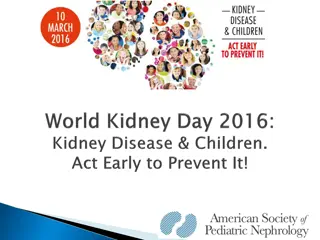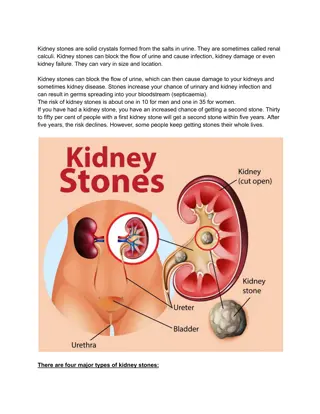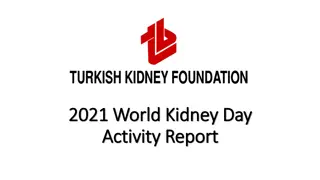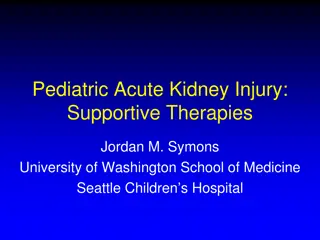
Kidney Disease in Children: Causes and Treatment Options
Kidney disease affects millions of children globally, emphasizing the importance of early detection, education, and a healthy lifestyle. Glomerulonephritis (GN) is a significant cause, with multiple etiologies including post-streptococcal GN, IgA nephropathy, Henoch-Schonlein purpura, and systemic lupus erythematosus. Awareness of these conditions and their characteristics is crucial for timely intervention and management.
Download Presentation

Please find below an Image/Link to download the presentation.
The content on the website is provided AS IS for your information and personal use only. It may not be sold, licensed, or shared on other websites without obtaining consent from the author. If you encounter any issues during the download, it is possible that the publisher has removed the file from their server.
You are allowed to download the files provided on this website for personal or commercial use, subject to the condition that they are used lawfully. All files are the property of their respective owners.
The content on the website is provided AS IS for your information and personal use only. It may not be sold, licensed, or shared on other websites without obtaining consent from the author.
E N D
Presentation Transcript
Kidney disease affects millions of people worldwide, including many children who may be at risk at an early age. It is therefore crucial that we encourage and facilitate education, early detection and a healthy life style in children, to fight the increase of preventable kidney diseases and to treat children with inborn and acquired disorders of the kidneys worldwide.
Juan Kupferman, MD Albert Einstein School of Medicine
GN is an important cause of morbidity and mortality in patients of all ages GN is characterized by glomerular injury and inflammation Normal glomerulus GN is defined by the presence of some or all of these clinico-biochemical characteristics o Hematuria (always present) o Proteinuria o Edema o Hypertension Most cases are due to an immunologic response to a variety of etiologic agents Acute glomerulonephritis
GN has multiple etiologies and could be primary (affecting only the kidneys) or secondary to a systemic disease Most common: Post-Streptococcal GN (PSGN) IgA nephropathy (IgAN) Henoch-Schonlein purpura (HSP) Systemic lupus erythematosis (SLE)
Acute post-Streptococcal GN is the most common glomerulonephritis in childhood Typically with low complement C3 and evidence of recent Streptococcal infection Other microorganisms can cause similar findings Normal capillary loop (EM) IgA nephropathy typically presents with recurrent episodes of gross hematuria Complement is normal Post-Streptococcal GN (EM)
Henoch-Schonlein purpura nephritis occurs during or after resolution of the acute disease Similar renal histologic findings to IgA nephropathy Systemic lupus erythematosus can cause focal to diffuse proliferative kidney disease ANA is positive and complements C3 and C4 may be decreased
Specific therapy depends on etiology Treatment goals o Reduce glomerular inflammation o Induce and maintain remission of proteinuria o Improve kidney function, if decreased o Control complications due to fluid retention (i.e. hypertension, edema) Therapeutic agents include o Antiproteinuric agents (ACE inhibitors or ARBs) o Fish oil (in IgA nephropathy) o Steroids o Immunosuppresive agents o Cyclophosphamide o Mycophenolate mofetil o Rituximab o Plasmapheresis
Hematuria could be a risk factor for chronic kidney disease progression in glomerular diseases -Moreno et al. Hematuria. Pediatr Nephrol 2015 Urine biomarkers, such as monocyte chemoattractant protein-1/CCL2 and neutrophil gelatinase-associated lipocalin, may be useful tools in the assessment of disease activity in lupus nephritis -Abulaban et al. Biomarkers. Curr Rheumatol Rep 2015
Characterized by glomerular injury and inflammation, often due to an immunologic response to a variety of etiologic agents There are a variety of immunomodulator therapies that must be tailored to the specific etiology Novel biomarkers and medications are being developed to enhance our ability to diagnose, predict prognosis, and treat.
Your pediatric nephrology community continues to work hard to improve clinical care, foster education, and advance the science regarding kidney disease in children! We appreciate your support and all you do for children s health care! Your pediatric nephrology community continues to work hard to improve clinical care, foster education, and advance the science regarding kidney disease in children! We appreciate your support and all you do for children s health care!

